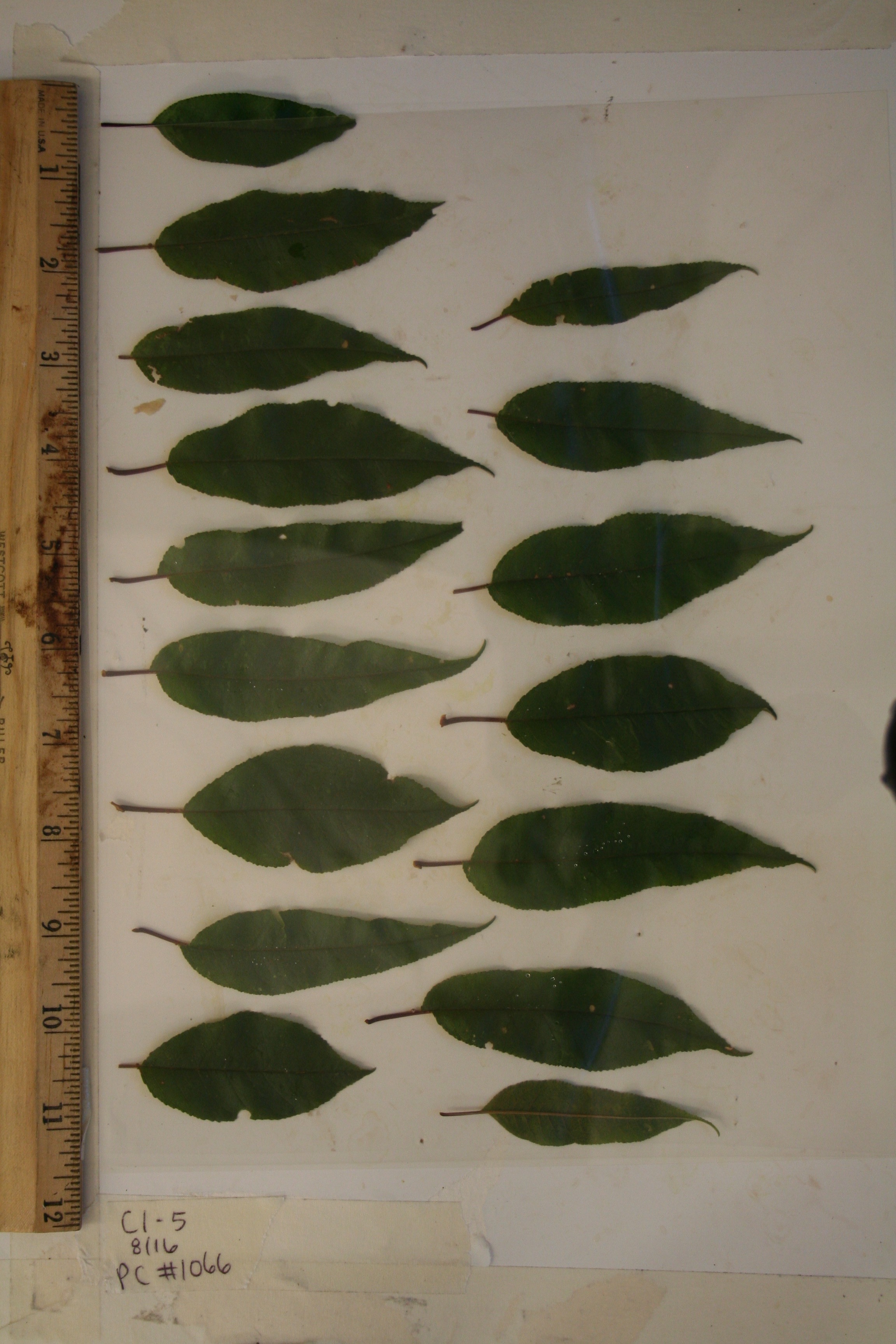So we last left off with green leaf collection efforts out in the field. Since our experimental research plots are in New Hampshire all of our leaves were frozen for transport! They arrived back in Syracuse and were taken out for our next steps! Because we’re looking at how leaves change over time we focus on dry weights and leaf area for this step.
The best way to get consistent weights on leaves is to dry them. So our frozen leaves, after being removed from the freezer, were weighed, photographed (more on this later), and then placed in our oven for drying at 60 degrees Celsius. Depending on the level of moisture in a sample 24-48 hours of drying is generally sufficient. These dried leaves were then weighed and set aside for grinding.
Did you catch that – we took pictures of leaves! One of ways to measure leaves isn’t just by mass, its by area. Specifically, specific leaf area, or SLA, which is defined as the ratio of leaf area to dry mass. The easiest way to get the area is to photograph the leaf, designate a scale for measurement and then count the pixels in regard to that scale. We used a program called ImageJ for this fancy pixel work, and it was not as hard as it sounds.

Once the pictures were taken they looked like this:

and then when they were analyzed for area it looked something like this:

I am focusing on Beech and Pin Cherry leaves and have less than 100 samples but it still took some time. The pictures above are pin cherry leaves that came from tree #1066 (Which I don’t remember shooting but it’s cool to think that when I go back into the plots I might remember some of the tree leaves that I got from that individual tree!)
Alas, all things come to an end, and this was the end of the road for a leaf to remain whole. After coming out of the drying ovens the bags of leaves were crunched up by hand and were then ground up into fine particles for the next step in our process.
We used a small Wiley Mill for grinding, mostly because our samples were less than 5 grams per sample. Whenever we have larger samples they get processed in a much bigger grinder. Ground samples were fed into a funnel in the machine and collected into glass vials that were labelled:
Here’s Dan looking SO excited that I was taking pictures of him.
It took approximately 5-7 minutes per sample with larger samples taking longer both because of their size but also because static electricity becomes your #1 enemy when trying to get little leaf particles off of things. Dan had this fancy tactic of vigorously hitting the wooden pestle (used for feeding leaf pieces into the mill) against the sides of the metal funnel and it made a bell sound. My experience was not as musical!
Once all of our samples had been ground we were ready for the ashing and digesting steps!

See you next time!
Gretchen
Hi all! So I started my first semester of graduate school working with the MELNHE project (If you need a refresher poke around on here, the bottom line is that we’re doing nutrient manipulations in a forest). Primarily I’m working with Pin Cherry and Beech leaves to analyze them for leaf area and nutrient composition. The journey started in August when I went up to our New Hampshire experimental forest in the White Mountains. We were using a shot gun to shoot down tree leaves from the canopy. We wanted sun exposed leaves to collect during the growing season so we could compare them to leaves we collect during the fall. Despite standing still trees can be hard to shoot!
This is Dan (first photo in the grey long sleeves), he’s a graduate student who is ahead of me one semester. He’s looking at the same thing I am but with different tree species, White and Yellow Birch. The second Photo is Adam, a previous graduate student and general mastermind for the melnhe project. Ok, mastermind might be a strong word. But he knows all the forest plots and has more knowledge than a newbie! The last picture is me in green. After shooting down some leaves/branches we would select 10-20 leaves that were healthy (in color and size) and lacked holes from shot or herbivory. Then these leaves would be stacked on top of eachother and packaged in a Ziploc bag that was labelled with what tree they came from. The bags will be frozen and were going to be analyzed so we wore gloves to prevent contamination to the leaves.
Overall we collected over 300 samples! It was a lot of fun if you like being outside and staring upwards, which I do, and I’m really good at it because I’m a birder.
It took a long weekend to finish what we came there for. The cool thing about being in the White Mountains is the ability to tent camp and look at other wild life. I don’t just like leaves and birds, I also like moths and bugs!
Waved Sphinx (Ceratomia undulosa, 7787) and a male forked fungus beetle.
Stay tuned! Next time I will answer the question that is keeping you on the edge of your seat – “what did you do with the bags of frozen fresh green leaves??”













